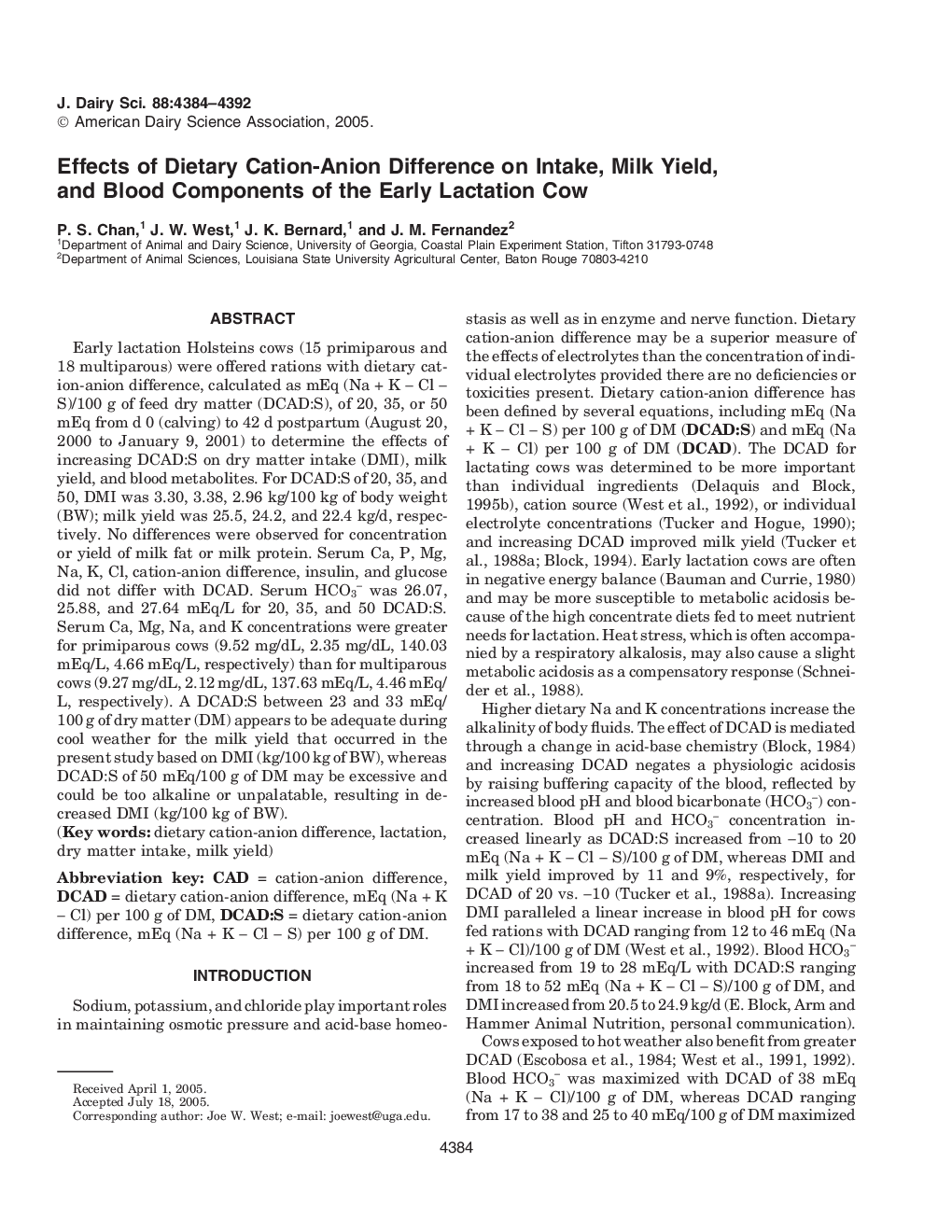| Article ID | Journal | Published Year | Pages | File Type |
|---|---|---|---|---|
| 2441681 | Journal of Dairy Science | 2005 | 9 Pages |
Early lactation Holsteins cows (15 primiparous and 18 multiparous) were offered rations with dietary cation-anion difference, calculated as mEq (Na + K − Cl − S)/100 g of feed dry matter (DCAD:S), of 20, 35, or 50 mEq from d 0 (calving) to 42 d postpartum (August 20, 2000 to January 9, 2001) to determine the effects of increasing DCAD:S on dry matter intake (DMI), milk yield, and blood metabolites. For DCAD:S of 20, 35, and 50, DMI was 3.30, 3.38, 2.96 kg/100 kg of body weight (BW); milk yield was 25.5, 24.2, and 22.4 kg/d, respectively. No differences were observed for concentration or yield of milk fat or milk protein. Serum Ca, P, Mg, Na, K, Cl, cation-anion difference, insulin, and glucose did not differ with DCAD. Serum HCO3− was 26.07, 25.88, and 27.64 mEq/L for 20, 35, and 50 DCAD:S. Serum Ca, Mg, Na, and K concentrations were greater for primiparous cows (9.52 mg/dL, 2.35 mg/dL, 140.03 mEq/L, 4.66 mEq/L, respectively) than for multiparous cows (9.27 mg/dL, 2.12 mg/dL, 137.63 mEq/L, 4.46 mEq/ L, respectively). A DCAD:S between 23 and 33 mEq/ 100 g of dry matter (DM) appears to be adequate during cool weather for the milk yield that occurred in the present study based on DMI (kg/100 kg of BW), whereas DCAD:S of 50 mEq/100 g of DM may be excessive and could be too alkaline or unpalatable, resulting in decreased DMI (kg/100 kg of BW).
